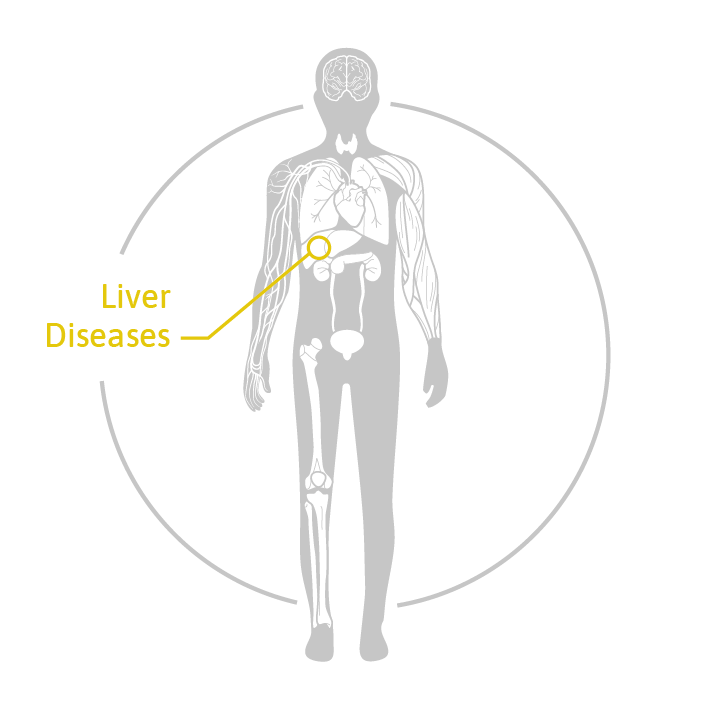microRNAs & liver disease: a new era in biomarker discovery
Liver diseases such as primary or metastatic liver cancer, metabolic dysfunction associated steatotic liver disease (MASLD), drug-induced liver injury (DILI), and viral hepatitis represent major global health challenges.
Surgical resection (hepatectomy) remains a cornerstone treatment for patients with primary liver cancer, such as hepatocellular carcinoma (HCC), and secondary liver tumors, such as colorectal liver metastases. While potentially curative, liver resection is associated with the risk of post-hepatectomy liver failure (PHLF), a severe complication that occurs when the remaining liver tissue is insufficient to maintain essential metabolic and synthetic functions. Predicting which patients are at risk for PHLF is a major clinical challenge, as standard liver function tests do not reliably reflect the functional reserve of the liver.
Recent advances in molecular biology, however, have opened the door to novel diagnostic tools—among them, microRNAs (miRNAs) have emerged as powerful biomarkers for liver disease.
At TAmiRNA, we specialize in the discovery, validation, and clinical implementation of circulating microRNAs as biomarkers. This page explores how miRNAs function in liver biology and disease, with a particular focus on three key players: miR-122, miR-192, and miR-151a.
What are microRNAs?
microRNAs are short, non-coding RNA molecules that regulate gene expression by binding to messenger RNAs (mRNAs) and inhibiting their translation or promoting degradation. They play essential roles in development, cell differentiation, apoptosis, and tissue homeostasis.
Liver tissue expresses a unique set of miRNAs, some of which are highly enriched and play critical roles in hepatic function. These miRNAs are not only present in cells but can also be detected in blood and other body fluids, where they serve as promising non-invasive biomarkers for liver injury and disease.
Liver-Enriched microRNAs: Spotlight on miR-122, miR-192, and miR-151a
miR-122
- The most abundant liver-specific miRNA, accounting for ~70% of total hepatic miRNA content.
- Plays a crucial role in lipid metabolism, hepatocyte differentiation, and viral replication (notably in hepatitis C infection).
- Circulating miR-122 levels are highly responsive to hepatocellular injury, making it a sensitive and early marker of liver damage.
- miR-122 has been extensively studied in drug-induced liver injury (DILI) and is included in multiple biomarker qualification programs.
miR-192
- Another liver-enriched miRNA with roles in hepatic glucose metabolism, inflammation, and fibrosis.
- Circulating miR-192 increases in response to acute and chronic liver injury, including NAFLD and alcoholic liver disease.
- Its diagnostic value is enhanced when measured in combination with miR-122 and other liver-specific miRNAs.
miR-151a
- A lesser-known, but promising candidate associated with sinusoidal endothelium, inflammatory response, and mitochondrial function.
- Its expression is tightly regulated and sensitive towards inflammatory cues in the liver, suggesting potential utility as a complementary biomarker.
- May help distinguish between different types of liver damage when used in multi-marker panels.
Why Use microRNAs as Liver Biomarkers?
Compared to traditional protein biomarkers, miRNAs offer several advantages:
- Tissue specificity: Certain miRNAs, such as miR-122, are predominantly expressed in liver tissue.
- Early detection: Circulating miRNAs are released rapidly into blood upon hepatocyte injury.
- Stability: miRNAs are stable in biofluids and resistant to RNase degradation, enabling robust detection.
- Non-invasiveness: A simple blood sample is sufficient to measure circulating miRNAs.
- Quantifiability: Expression levels can be accurately quantified using RT-qPCR or next-generation sequencing.
TAmiRNA’s Role in Advancing Liver miRNA Biomarkers
TAmiRNA has been at the forefront of miRNA biomarker development for liver diseases through both research and regulatory pathways:
- hepatomiR® Our CE-marked IVD test quantifies circulating miR-122, miR-192, and miR-151a from plasma to assess liver function and hepatocellular integrity.
- Using a proprietary algorithm, hepatomiR® calculates a liver function score (p-Score). The hepatomiR® p-Score enables preoperative stratification of liver cancer patients, helping clinicians to identify those at elevated risk for PHLF and improve surgical planning and patient outcomes.
- TransBioLine Project: We participated in this EU-funded initiative to qualify circulating miRNAs including miR-122 as safety biomarkers for drug-induced liver injury.
- Contract Research Services: We support pharmaceutical and diagnostic companies with tailored NGS, RT-qPCR, and bioinformatics solutions for miRNA biomarker discovery and validation.
The Future of Liver Disease Diagnostics
As our understanding of liver-enriched microRNAs grows, so does their clinical potential. From detecting subclinical liver injury to stratifying disease risk and monitoring treatment response, circulating miRNAs offer a new frontier in personalized hepatology.
If you’re interested in leveraging microRNA biomarkers for liver research, drug safety studies, or clinical diagnostics, get in touch with our team at TAmiRNA. We’re your trusted partner in transcriptomics, biomarker discovery, and diagnostics.









